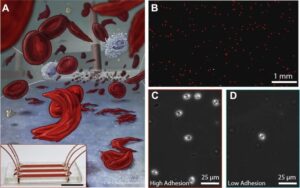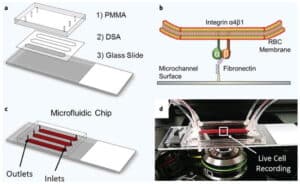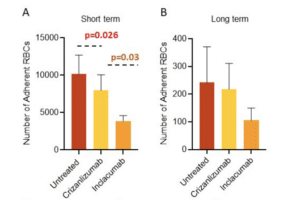Objectives
We present a standardized in vitro microfluidic assay and Occlusion Index (OI) for the assessment of red blood cell (RBC)–mediated microcapillary occlusion and its clinical associations in sickle cell disease (SCD).
Methods
Red blood cell mediated microcapillary occlusion represented by OI and its clinical associations were assessed for seven subjects with hemoglobin-SC disease (HbSC), 18 subjects with homozygous SCD (HbSS), and five control individuals (HbAA).
Results
We identified two sub-populations with HbSS based on the OI distribution. HbSS subjects with relatively higher OIs had significantly lower hemoglobin levels, lower fetal hemoglobin (HbF) levels, and lower mean corpuscular volume (MCV), but significantly higher serum lactate dehydrogenase levels and absolute reticulocyte counts, compared to subjects with HbSS and lower OIs. HbSS subjects who had relatively higher OIs were more likely to have had a concomitant diagnosis of intrapulmonary shunting (IPS). Further, lower OI associated with hydroxyurea (HU) responsiveness in subjects with HbSS, as evidenced by significantly elevated HbF levels and MCV.
Conclusions
We demonstrated that RBC-mediated microcapillary occlusion and OI associated with subject clinical phenotype and HU responsiveness in SCD. The presented standardized microfluidic assay may be useful for evaluating clinical phenotype and assessing therapeutic outcomes in SCD, including emerging targeted and curative treatments that aim to improve RBC deformability and microcirculatory health.








